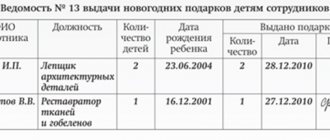Shortage upon receipt of goods
Return back to Shortage
In the event that a shortage is detected during the acceptance of goods, further acceptance of goods is suspended, and the responsible warehouse employees draw up a unilateral report on the fact that a shortage of goods has been identified. Responsible employees who perform acceptance are required to take a set of measures to ensure the safety of all goods received at the warehouse.
If in fact it is established that the gross weight of individual items of goods (cargo) does not correspond to the weight indicated in the accompanying or transport documents, the buyer must not open the packaging or container.
To continue operations for accepting goods and to draw up a bilateral act, you should call the responsible representative of the consignor (for example, a manufacturer or intermediary) to the warehouse. This provision applies to both same-resident and non-resident representatives of the sender (supplier). A representative of a similar sender (supplier) is obliged to arrive on site to participate in the process of acceptance of goods no later than the next day from the moment he receives the call (and for perishable products, he must arrive no later than four hours from the moment he receives the call). The responsible representative of the non-resident sender (supplier) must arrive at the place within three days from the moment he receives the call (travel time is not taken into account).
If during the acceptance of goods it is established that the actual quantity and quality of the goods do not correspond to the data specified in the accompanying documents, then further acceptance is suspended and documents are drawn up about the identified shortages and violations of product quality.
1 If shortages, damage or deterioration of goods are detected when accepting goods from railway organizations, a commercial act is drawn up.
A commercial act is the basis for filing a claim with a supplier or transport organization.
The standard commercial act form is provided only for railway transport organizations. Its form was approved by order of the Ministry of Railways of Russia dated December 3, 2000. No. 2 Central lock.
The commercial act is drawn up by representatives of the recipient organization and the transport organization that delivered the inventory items.
The act is drawn up on the day of acceptance of the cargo. If it is impossible to draw up a commercial act on this day, it must be drawn up no later than the next day.
The commercial act is drawn up in three copies:
§ the first copy remains with the recipient organization;
§ The second and third copies are transferred to the transport organization.
The storage period for a commercial act in the organization’s archive is five years.
2 When establishing a shortage, spoilage or damage to goods that arose during transportation of goods by a vehicle of a motor transport organization
, draw up
an act,
about which a note is made on the waybill. Based on the act, a claim is made to the ATP.
3 When identifying shortages, spoilage or damage to goods that arose during acceptance of goods at the buyer’s warehouse
, then the selection committee draws up
a “Act on the established discrepancy in quantity and quality when accepting inventory items
”
(Form No. TORG-2).
The act is drawn up in two copies. 4 If a shortage, deterioration or damage to goods that occurred during the acceptance of imported goods is established, “ Report on the established discrepancy in quantity and quality during the acceptance of imported goods” in form No. TORG-3 . It must be drawn up in the presence of the buyer’s MOL, a representative of the foreign supplier organization and experts from the Chamber of Commerce and Industry in five copies.
5 When goods are received without accompanying documents from the supplier (uninvoiced delivery), a commission consisting of the MOL, a commodity expert and a representative of the administration draws up, for the goods actually received, a “ Certificate of acceptance of goods received without the supplier’s invoice” in form No. TORG-4 in two copies.
The prices for such goods are determined by the merchandiser. If it is impossible to determine them, then the wholesale enterprise accepts such goods for safekeeping according to physical indicators (without price) and takes them into account on off-balance sheet account 002 “Inventory assets accepted for safekeeping.”
Goods are accepted for safekeeping if they were not ordered or delivered in violation of the contract. Such goods are stored separately. The buyer notifies the supplier within 24 hours that the goods have been accepted for safekeeping. The supplier, having received notification within five days, is obliged to give instructions on the redirection or use of the goods.
Acts of acceptance of products (goods) in terms of quantity and quality are registered and stored in the manner established at the wholesale enterprise.
The buyer makes claims regarding non-compliance of goods in terms of quality, completeness, containers, packaging and labeling with standards, technical specifications, drawings, recipes, samples to the manufacturer or supplier-sender.
Questions for self-control
- On the basis of what regulatory documents are goods accepted at wholesale enterprises?
- Who can be a supplier of goods to wholesale trade enterprises?
- What types of transport can goods be delivered to wholesale trade enterprises?
- What documents do suppliers issue for goods shipped to customers?
- What types of contracts can be concluded with suppliers of goods?
- How are goods accepted at the supplier’s territory (warehouse, base)? What documents are used to document it?
- What is a “Power of Attorney”? Her characteristics.
- How is goods accepted at the carrier’s territory (railway station)? What documents are used to document it?
- How are goods accepted at the territory of the buyer’s organization by quantity? What documents are used to document it?
- How are goods accepted on the territory of the purchasing organization based on quality? What documents are used to document it?
- How are goods accepted on the territory of the purchasing organization based on completeness?
- Methods of checking received goods in terms of quantity, quality and completeness.
- Documentation of shortage of goods upon acceptance at the railway station.
- Documentation of the shortage of goods upon acceptance from the motor transport carrier.
- Documentation of shortage of goods upon acceptance at the territory of the purchasing organization.
- Documentation of shortage of goods upon acceptance of imported goods.
- Documentation of goods received without accompanying documents.
Report of shortage of goods
If the responsible representative of the supplier does not appear or if his presence is not necessary, acceptance of the goods may occur with the participation of:
- a responsible representative of another organization, designated by the head of this organization;
- a representative of the public of the organization receiving the cargo (goods), who is appointed by the head from among the employees approved by the official decision of the trade union committee.
With the consent of the manufacturer (sender), goods can be accepted unilaterally by the recipient enterprise.
The representative who is allocated to participate in the process of acceptance of goods must have in his hands the appropriate certificate issued to him for each separate (one-time) acceptance separately.
Upon completion of acceptance of goods, an act is drawn up, which should indicate:
— its number and date of compilation;
— place of acceptance of goods (cargo) and, accordingly, place of drawing up the act;
— start and end times of acceptance;
— full name of the consignee and his address (legal, actual);
— Full names of persons taking part in the acceptance process, their place of work and their positions;
— number and date of the power of attorney (certificate) for the right to participate in the acceptance;
— information that all persons involved in the acceptance of goods (cargo) are familiar with the established rules for the acceptance of goods (cargo) by their quantity.
The act indicates the name and address of the sending enterprise (manufacturer, manufacturer, intermediary), the number and date of the official telegraph call, the number and date of the transport document, invoices, as well as the time of delivery of goods (cargo) to the warehouse. If a commercial report was drawn up upon receipt of the cargo, then in the drafted report on the fact of shortage of goods, its number and date of preparation must be written.
Information about:
- what exact weight or under whose specific seals the goods (cargo) were shipped;
- about the total actual weight and about the weight that appears according to the transport documentation;
- about the mass of each individual place in which a shortage was identified;
- in what way or method the number of missing goods was determined;
— the exact number of missing goods (cargo), their total cost.
An important point in the act is the conclusion about the location and causes of the shortage.
If, during the process of acceptance of goods (cargo), their surplus is identified, then the act must reflect detailed information about them (according to the same scheme and in the same order).
The act of acceptance of goods according to their quantity is signed by all responsible persons who took part in the acceptance, it is approved by the head of the organization receiving the goods (cargo) no later than the next day from the moment of its preparation.
It is mandatory to attach copies of shipping documentation, packaging labels and tags, seals of containers during inspection of which the shortage was identified, copies of the certificate of the representative of the sending organization, which was allocated to it to participate in the process of acceptance of goods, to the report on the shortage of goods or their surplus. (cargo), a unilateral act, a commercial act, as well as copies of other documents that directly indicate the fact of a shortage.
Let's consider the procedure for employees to act in case of short delivery or short delivery of goods from the supplier.
According to the legal supply contract, a certain number of days are allotted for the acceptance of an incoming shipment of goods from the supplier; accordingly, the deadline for filing a claim for short delivery or defective goods is also determined. When concluding a contract, it is necessary to have a clear understanding of exactly what period should be specified in the contract. The acceptance period is determined by the specifics of the goods; as a rule, 2-3 days are enough to receive and subsequently process the goods. Thus, a period of 7 banking days is sufficient to file a claim for shortfalls when accepting delivery “on site”, in boxes.
However, we can talk about this period as sufficient when working with goods, the quantity of which can actually be checked upon receipt, but it is worth understanding that when receiving goods in boxes it is impossible to check the contents of each package. Therefore, when concluding a contract, it is worth insisting that the supplier accept claims for internal shortages, shortages and defective goods throughout the entire sales period.
Drawing up a statement of shortage
The deficiency report serves as the basis if the recipient intends to file a claim with the organization or transport company that did not deliver the goods in order to compensate for damage in the form of monetary compensation or additional quality products. If it is drawn up during the audit, and not during the procedure for receiving the cargo, then the information contained in it is taken into account when preparing annual reports. Based on the information provided, the commission can most accurately determine the amount of expenses of a company or organization.
Regulatory documents
To date, there is no single form of report on the identified shortage of goods. Therefore, the law allows you to draw up a document of the type that the company developed on its own specifically for these purposes. The main thing is that it reflects all the necessary details and contains complete information.
When creating your own prototype of a regulatory document, you can rely on existing unified forms. The sample act on the identified shortfall of cargo or goods used in the future must be fixed in the Accounting Policy for the purpose of accounting control. To gain the skills to correctly draw up acts for various purposes, you need to refer to regulatory documents and thoroughly study the rules and procedure for filling out primary documentation. Today, three types of forms are used for different purposes.
- TORG-2. This form is used when accepting products from domestic companies. It must be filled out without errors or blots and have at least three copies.
- TORG-3. If the receipt of cargo that was delivered by foreign companies is carried out, the receiving employee is required to fill out a report in accordance with this form. Later he must submit the document in five copies.
- TORG-12. Missing products or goods to be returned are described in a statement filled out according to the model of this document.
Reception employees are required to know the intricacies of filling out all forms. This will avoid problems with authorities that control document flow.
Creation of an inspection commission
Since during the acceptance of commercial cargo, an insufficient quantity of goods is discovered, the law requires the drawing up of an act. To comply with legal standards, management is obliged to create a special commission from among the employees who accept products (or other employees). The main thing is that it must include at least three people.
It is important to know! The exception is individual entrepreneurs who do not have a staff of workers. They can identify the fact of a shortage and draw up the document themselves.
p style="text-align: center;">
The composition of the commission is approved by the relevant order of the management. Based on the concluded agreement, they undergo special training. The report must be drawn up with the participation of a representative of the supplier or shipper. For this purpose, the contract prescribes the procedure for notifying the seller of the need to send an authorized person to accept the goods and record shortfalls, specifying the time frame for its arrival, as well as actions in case of its absence. In practice, if the cargo arrives unaccompanied, the document is endorsed only by the recipient. A copy is sent to the supplier by registered mail or email.
Compilation procedure
In order to avoid various misunderstandings during an inspection by special authorities or during court proceedings, the deficiency report must be drawn up as correctly as possible. To do this, you need to take into account several basic points.
- The legislation allows the use of a unified form or sample developed by a company or organization, but containing all the necessary details.
- If a shortage is discovered, the document must be drawn up in the presence of a representative of the supplier. If you don’t have one, you can invite a driver from a carrier company or forwarder. In a situation where it is not possible to attract the above persons, the recipient has the right to use the services of an independent expert.
- If the recipient simultaneously accepts cargo from several suppliers and in each case a shortage is detected, it is recommended to draw up as many reports as the number of incomplete shipments arrived. In order to provide an evidence base, all violations must be recorded using photos and videos.
- The document drawn up must be signed by members of the commission, a representative of the supplier, or instead an independent expert.
- After registration, a lawyer or accountant is obliged to draw up a claim as soon as possible and submit it to the seller against signature. The timing of this procedure is clearly defined by Federal legislation. If they are violated, the supplier has the right to refuse to fulfill it.
- If there is a shortage of fuel, the commission is obliged to draw up a report on the write-off of fuel and lubricants, indicating the reason for the overconsumption.
During the preparation of the act, you need to enter all the necessary details, and after completion, indicate the date of execution.
Contents of the shortage report
A sample report on identifying a shortage of goods, which can be viewed, is presented at the end of the article. For a document to have legal force, it must be filled out correctly.
A cap. Here you should indicate the details of the company or organization that received the goods. They contain: name, location address, structural unit, telephone numbers. On the other hand, you need to enter the document number and the date of its preparation.
Main part. This section fully displays all important information.
- Details of the sender of the cargo or goods (name of organization, address, telephone number).
- The location where the shipment was received.
- Information about the product manufacturer, supplier, insurance company (if necessary).
- Basic documents (contract, invoice, invoice, act), and their data (number and date of preparation).
- The date the item was shipped and the method of transportation.
- Day, date and time of shipment from the warehouse or departure station
List of goods. Here, for clarity, it makes sense to insert a table in which the fact of the shortage and basic information will be recorded. Units of change are indicated according to OKEI.
- Name, quantity, article, grade, price, amount of goods or cargo specified in the invoice and available in fact.
- The condition of the seals of the container, wagon, boxes (to detect unauthorized opening and internal shortages).
- List of defective and broken products (quantity, amount).
- Deviation from the data specified in the accompanying document, that is, a shortage or surplus.
The next section should show how the quantity or weight of the goods was counted and measured, describe the nature of the damage and an opinion about the reasons for its occurrence. At the end, the actions of the recipient are indicated, namely, that the goods were unloaded and sent to the warehouse for further storage. In this case, you must enter its name. What follows is the opinion of the commission members and their conclusion.
Attention! The fully completed document is endorsed by members of the commission. It indicates the place of work and position of each of them, as well as the decryption of the signature. Similar information about the supplier’s representative, transport company, or independent expert is also entered here.
Shortage upon acceptance of goods, act of shortage
Of course, you should not abuse the supplier’s trust and submit claims based on real cases of shortages and when defective goods are identified.
Actually, the regulations for working with under-delivery.
- The storekeeper or other employee receiving the goods, having discovered underdelivery or defective goods, is obliged to complete the acceptance of the goods, noting the missing items or quantity in a copy of the accompanying invoice. Defective goods must also be noted in the same document. Defective goods discovered during receipt of goods must be photographed so that the packaging is visible. Photos can be taken either by the warehouse worker himself or by a photographer. A period of 2 days is allotted for receiving the goods.
- The storekeeper who received the goods, or the senior storekeeper, immediately after completion of the reception, transfers the documents - a copy of the accompanying invoice with marks - to the department for placing goods on arrival in the company's information base.
- For further convenient and correct work on reconciling settlement acts, etc., it is necessary to deliver the goods to the receipt according to the original invoice, without amendments. You can enter a corrected document into the information base if the supplier is located nearby and is ready to quickly provide corrected documents.
- After issuing the original invoice for the receipt, the department manager must generate a return invoice for the undelivered goods, a statement of underdelivery and transfer it for further processing to the category manager, to whom the supplier is assigned.
- The category manager gives the supplier a return invoice, a document, a photo and negotiates to resolve the problem - if the answer is positive, the supplier posts the invoice in its information database, or ships the undelivered goods with the next delivery. In the latter case, the additionally delivered goods are placed on arrival as usual. It is impossible to post a return invoice for underdelivery - information on the movements of the goods is lost.
- If the supplier refuses to satisfy the claim, the shortfall is written off in agreement with the general director. You need to deal with shortfalls quickly; set a deadline for the category manager within which the issue must be resolved - otherwise you risk getting problems in reconciliation reports, etc.
If you identify a defective product during reception, act in accordance with the regulations for working with defective products.
⇒Stimul courses › Reference book › Useful materials › 1C:Enterprise 8.2 › Trade management for UK... › Working with suppliers
1C:Enterprise 8.2 / Trade management for Ukraine / Working with suppliers
Organization of goods acceptance into the warehouse
The structure and number of operations for the acceptance of goods depend on the place of acceptance and the type of cargo, as well as on the type of vehicle by which the goods are delivered to the warehouse. A generalized list of procedures for accepting goods into a warehouse, for example, of a distribution company is as follows:
- entry of a vehicle into the warehouse territory;
- control of the availability of shipping documentation;
- definition of unloading gate;
- delivering the vehicle to the ramp for unloading;
- vehicle access to the unloading site;
- external inspection of the vehicle and recording of faults, taking photographs if necessary;
- opening vehicle doors;
- supply of the required lifting vehicle;
- visual inspection of received goods (each cargo unit);
- supplying the necessary containers and placing them in containers (if necessary);
- picking up a cargo unit by a vehicle and transporting it to the ramp;
- acceptance of incoming cargo according to the number of packages in accordance with the accompanying documents;
- reconciliation and preparation of accompanying documents;
- execution of acceptance certificates indicating damage or shortage of cargo, if any;
- transfer of necessary documents to the supplier and confirmation of receipt of the cargo in the database;
- transportation of cargo to the acceptance area for final acceptance and preparation of goods for storage
Legal regulation of goods acceptance into warehouse
For a long time in our country, acceptance was carried out on the basis of two Instructions of the USSR State Arbitration Court No. P-6 and No. P-7, adopted back in the mid-sixties of the 20th century. Many companies are still guided by these regulations in their activities, although their mandatory application has been abolished. Thus, if the parties did not refer to the mentioned instructions in the contract or did not fix the conditions for acceptance of products in the contract, all issues regarding detected discrepancies are either not resolved at all or are resolved on the basis of a personal agreement between company representatives
Checking accompanying documentation
When vehicles arrive at the warehouse, first of all, the presence of accompanying documents (bill of lading, invoice, technical passport, GOST certificate of conformity, quality certificate, etc.) and their contents are checked for compliance with the conditions (sender, recipient, quantity, assortment , packaging, etc.) fixed in the supply contract. The absence of any of these documents should not suspend acceptance of the goods. In this case, a report on the actual availability of the goods is drawn up, and the acceptance report indicates which documents are missing.
Determining the safety of the appearance of the vehicle, containers and packaging
Before directly unloading the vehicle, the storekeeper responsible for acceptance checks the presence of the sender's or point of departure seals on the vehicles or containers, the serviceability of the seals, the imprints on them, the condition of the vehicle itself, and the serviceability of the container. In case of detection of violations, as well as the absence or malfunction of seals, an inspection report on the condition of vehicles is drawn up, or a note is made in the consignment note. Some companies practice photography or video recording of vehicles and cargo. Such visual information can greatly facilitate the process of agreeing on acceptance results with the supplier or transport company.
Unloading vehicles
Unloading of goods, as a rule, is carried out using various technical means. However, practice shows that goods often arrive at the warehouse in boxes, or, as warehouse workers say, “in bulk.” Loading and unloading operations with this method of transportation take considerable time, however, since the capacity of vehicles is used as efficiently as possible, enterprises often refuse pallet shipments.
In order to unload goods, for example, with a forklift, boxes (packages) are placed on pallets. Already at this stage, it is possible to form cargo units according to certain stowage standards. At the stage of registering a new product in the warehouse database, among other characteristics, it is determined how many packages can be stacked on a pallet in such a way that the capacity of the warehouse cells is optimally used. When unloading these goods in boxes (packages), they are placed on pallets in accordance with established standards. This information can be included in the task for receiving goods or transmitted to the storekeeper in the form of a separate document. Using this approach allows you to reduce the time for recounting goods, eliminate errors when determining the quantity of goods accepted, and also simplify work with cargo in all subsequent warehouse operations.
Preliminary acceptance - checking the quantity and appearance of the packaging of the received goods
Often, the so-called primary acceptance, which consists of recalculating packages and examining the appearance of the packaging, is carried out simultaneously with the unloading of goods. After unloading is completed, the warehouseman responsible for receiving, in most cases, already has sufficient information to prepare shipping documents.
If a shortage or substandard product is detected, a product acceptance report is drawn up, which indicates the number of the waybill and invoice, the quantity of the missing/substandard product, its total cost, the alleged causes of damage, the persons involved in the acceptance, their signatures and the date of drawing up the report. If one of the parties does not agree with the content of the act, she is given the right to additionally record her opinion in the act. After detecting shortages/damage to the cargo and drawing up a report, it is necessary to notify the supplier of the results of acceptance.
Acceptance of returns from customers, as a rule, is carried out according to an algorithm similar to acceptance. The difference is that it is recommended that the goods be posted and placed in the warehouse only after the goods have been identified by a Defect Specialist. After acceptance of such goods, one of the following types of processing is carried out:
- Rework - in the event of a possible correction of a violation of the quality of the product, it can be repaired, repackaged, repacked, etc. depending on the type of product
- Return to supplier or replacement by supplier
- Recycling and write-off
Methodology for registering discrepancies arising upon receipt of goods
The methodology presented in this section can be applied when working with the Trade Management for Ukraine , edition 2.3. The examples given in the methodology were modeled in the demo configuration database Trade Management for Ukraine , version 2.3.2.6.
The goods received from the supplier may not correspond to the quantity indicated in the accompanying document. In this case, the following procedure for processing the operation is proposed.
Call the supplier for joint acceptance
Bilateral acceptance certificates, which were drawn up together with the supplier, practically guarantee that the court will recognize the evidence of the poor quality of the goods. It is therefore important that the supplier is present at the time of acceptance or is at least notified both in writing and by telephone.
Send a letter to the counterparty with an offer to participate in quality acceptance. In the notification, indicate the name of the product, the date and number of the invoice or the number of the transport document, and the quantity of goods of inadequate quality. Indicate what deficiencies were found, where and at what time the supplier’s representative should arrive to draw up a joint report regarding the defective product.
Keep evidence that you sent the notice to the counterparty. Postal documents may be required in court in the event of a dispute.
Send a notification, not a complaint. Otherwise, this will not be evidence that the supplier’s representative was called for acceptance.
Example: a company filed a claim against a supplier to recover the cost of a defective product. During the consideration of the case, the judges came to the conclusion that the letter of claim sent by the company stated that the product did not meet the quality characteristics. However, it was not a document that would oblige the counterparty to appear for joint acceptance of the goods. As a result, the buyer lost the dispute because the judges decided that he did not comply with the acceptance procedure.
When the parties to the contract have not agreed on the exchange of letters by e-mail, the buyer should not notify the supplier solely by e-mail. The court may consider such notice to be improper.
How to reflect shortages identified upon acceptance of goods or later in the accounting of the supplier and buyer
The document Receipt of goods and services is issued in accordance with the received printed form of the document.
2. When checking the quantity of goods, it turned out that there were actually fewer goods than indicated in the printed form of the document.
In this case, based on the document Receipt of goods and services, Adjustment of series and characteristics is entered and for the quantity of goods that is missing in the invoice, a new characteristic is established, for example, underdelivery .
If the supplier has agreed to additionally supply the missing goods, then two documents are drawn up sequentially:
1. Document Return of goods to the supplier . The document indicates the quantity of goods that the supplier under-delivered. The product is indicated with the new characteristic of underdelivery .
2. A new delivery of goods is issued using a new document Receipt of goods and services .
Information about how many and what goods the supplier under-delivered can be viewed in the Statement of Goods Lots in Warehouses , by grouping the report by product characteristics.
If the invoice actually received more goods than indicated in the document Receipt of goods and services , then that part of the goods that is not indicated in the delivery document is received at the warehouse using the document Receipt order for goods . In this case, the supplier must send financial documents for the missing part of the goods. After receiving accompanying documents from the supplier, based on the document Receipt Order for Goods, the received financial accompanying document Receipt of Goods and Services .
Individual training 1C Individual course “1C: Accounting 8.2”
Other
Documentation of goods acceptance
To prevent errors during the acceptance procedure, it is necessary to document each inspection of the product. This will allow you to avoid conflict situations when communicating with the supplier when violations are detected in the quantity or quality of products.
In this case, you need to fill out the following documents:
- Certificate of acceptance of goods, drawn up in form No. TORG-1 (approved by Resolution of the State Statistics Committee of the Russian Federation dated December 25, 1998 No. 132).
- Certificate of acceptance of materials, drawn up in form M-7 (approved by Decree of the State Statistics Committee of the Russian Federation dated October 30, 1997 No. 71a). This form is used if, when checking the goods delivered in accordance with the contract, the buyer discovered its inadequate quality or shortage.
When accepting products, it is not necessary to use the above acts; the law allows the use of forms that establish the rules for document flow of the recipient’s organization.
If no deficiencies are identified during the acceptance of the products: the quantity and quality correspond to the parameters specified in the contract, then, according to the rules, the financially responsible person must fill out the acceptance certificate and indicate the following information:
- Title of the document;
- its serial number and date of compilation;
- details of the parties to the supply agreement;
- information about the delivered product (name, quantity of product is indicated);
- information about the packaging (container) in which the goods were delivered;
- details and signatures of the parties who drew up the act.
If discrepancies in the quantity or quality of products are detected, it is necessary to draw up a report indicating the identified deficiencies.







